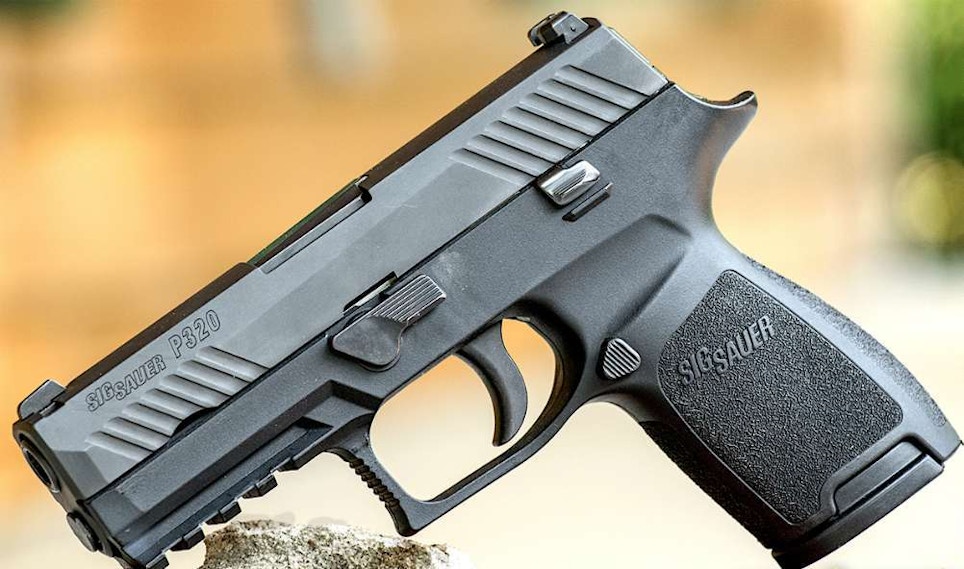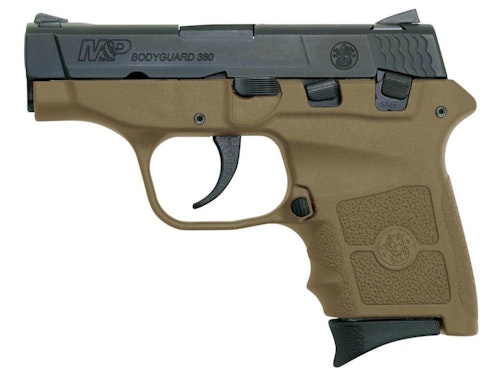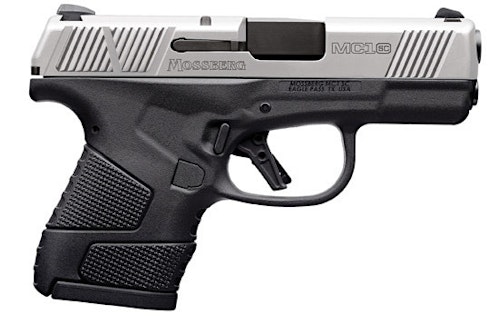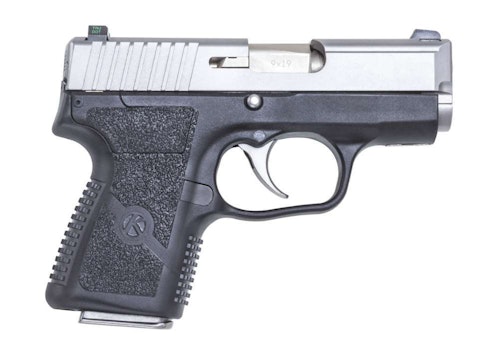Ever since the concealed-carry craze began sweeping the nation and firearm manufacturers began making ultracompact pistols, there have been those who have derided the tiny guns.
Some claim that too many are chambered in calibers that aren’t potent enough for self-defense situations. Others claim that unless you are carrying 15 rounds in the magazine, you’re really not serious about self-defense. Others even mock the small pistols as too small to shoot accurately.
Despite all that, this category has continued to flourish for two main reasons — the little pistols are easy to conceal and a breeze to carry. With more and more Americans deciding each year that concealed carry is for them, if your shop doesn’t stock a good selection of “pocket pistols,” you might be sending customers away to make their purchase elsewhere.
Before we look at some popular pistols, first let’s talk calibers.
Most of the first tiny semi-autos were produced in .32 ACP, a diminutive chambering that was widely considered marginal at best for self-defense applications. Some people carried them because they were easy to carry, but many weren’t comfortable with their lack of power.
The next round of small semi-autos was offered in .380 ACP. While much stronger than the .32, it was still not among what most experts consider to be the best calibers for self-defense. It can be very effective with well-placed shots, however, and some more recent ammunition offerings push the little .380 close to 9mm power levels.
Without a doubt the most popular caliber for small self-defense pistols is 9mm. It’s a favorite of many police agencies and military branches, so has plenty of credibility as a fight stopper. And while it forces pistols to be a little larger than typical .380s, many people feel the added stopping power is worth the little extra weight in their back pocket.
For revolvers, most small options are chambered in .38 Special, which is somewhat similar in power to the 9mm. Many will also shoot .357 magnum loads, which are substantially hotter and more powerful than all of the above. But they’re also a real handful to shoot from a light, small-frame revolver.
All that said, here’s a look at some old favorites and new upstarts to consider selling in your shop — along with a few wheelguns for good measure.
Old Favorites
The Glock 42 and 43 are among the most popular tiny semi-automatic pistols. The G42, which was introduced at the SHOT Show in 2014, became an instant hit despite the fact that its .380 payload seemed small to those Glock aficionados who had hoped the company would introduce a 9mm pocket pistol. At 5.94 inches long, .98 inches wide and 4.92 inches in height, the little pistol features 6+1 capacity and weighs a scant 13.8 ounces, which has helped it find its way into the pockets of concealed-carry practitioners throughout the country.
Just over a year later, Glock dropped another bomb, introducing the G43. Similar to the 42, the new Glock was a little bigger and chambered the more popular 9mm cartridge. At 6.26 inches long, 4.25 inches high and just 1.02 inches wide, it was such a big deal that many G42 owners ran out and purchased one to go along with their little .380.
Not taking a backseat to the Glocks, Smith & Wesson’s M&P Bodyguard 380 also hit the scene in 2014. The lightweight pistol features a high-strength polymer frame with a black, matte-coated stainless steel slide and barrel. The newest M&P Bodyguard 380 retains original design features including a 2.75-inch barrel, which contributes to an overall length of 5.25 inches and an unloaded weight of only 12.3 ounces, making it perfectly suited for concealed carry.
S&W later stepped up to the plate with an ultracompact 9mm offering, the Shield. In effect, S&W took the power and features of its full-size M&P pistols and put them into a slim, lightweight pistol. At only 6.1 inches long, the striker-fired pistol weighs in at a little more than 20 ounces. But its payload of 7+1 (8+1 with extended mag) made it an instant hit among those S&W fans who were wanting a very small 9mm carry pistol.
Another small semi-auto that has been quite popular since it was first introduced is the Sig P320 Subcompact. And there’s little wonder why, as its big brother, the full-size P320, is a fine pistol in its own right and the platform from which the Army’s new carry arm — the M17 — was derived.
This small Sig is chambered in 9mm and has many features that make it a worthy subcompact carry gun. While a little longer than the tiny Glocks and the S&W Bodyguard, the P320 Subcompact is still easily concealable at just 6.67 inches long. Height is 4.67 inches, and empty weight is 24.9 ounces.
Best of all, the little Sig has 12+1 capacity, giving it substantially more firepower than some of the other guns discussed. It also comes stock with Siglite night sights, which is a bonus since self-defense handguns are often used in low-light situations.
New Upstarts
A new subcompact pistol that looks like it is likely to do quite well at the retail level is the Beretta APX Carry. Beretta’s APX line was recently augmented when the company scaled down the APX to produce the APX Carry, a single-stack, subcompact 9mm ideal for concealed carry.
With an overall length of only 5.63 inches, the APX Carry is one of the smallest subcompact 9mm pistols available. Weight is 20 ounces, with a height of 4.17 inches and width of only .9 inches. With the same slide serrations, removable chassis fire-control group and bladed trigger as the larger APX pistols, the APX Carry should be a great semi-auto for concealed carry and is a fine addition to the APX line.
The Kahr PM9 Covert is another new, small semi-auto that is likely to be a good seller. The gun has a black polymer frame, matte-blacken stainless steel slide and stainless steel barrel.
At only 5.3 inches long, it’s quite a small package and very concealable. Height is 4.5 inches, width is .90 inches and unloaded weight is just 14.5 ounces. The new pistol has a little longer grip for more control when shooting and can accommodate a seven- or eight-round magazine.
Mossberg’s MC1sc will also draw your customers’ interest. At SHOT Show 2019, Mossberg rocked the gun world by introducing the little pistol, its first handgun in nearly a century. Since then, the MC1sc has received many good reviews, including here in the July/August 2019 issue of Shooting Sports Retailer.
A more recent extension to the line is the MC1sc Stainless Two-Tone, which was just introduced at SHOT 2020. The new model features a bead-blasted, stainless steel slide over a matte-black polymer frame. The durable frame is glass-reinforced, which provides high impact and chemical resistance combined with high tensile strength and stiffness. The MC1sc has an overall length of 6.25 inches and weighs in at 19 ounces.
Small Revolvers
Even with all the good semi-auto options you shouldn’t overlook small carry revolvers, which still hold a good piece of the market. While not as popular as their semi-auto brethren, they are still preferred by many who tout their simplicity, reliability and the power of the .357 Magnum load.
Smith & Wesson has long been a famous name in revolvers, and its new 340 PD proves the company is still at the top of its game. A J-frame revolver chambered for .357 Magnum, the 340 PD weighs in at only 11.8 ounces.
The gun’s ultralight weight comes from its matte-black scandium alloy frame. Coupled with a grayish titanium alloy 5-round cylinder, weight is held to a very minimum. Overall length is 6.3 inches, making the 340 PD easy to conceal, and the snag-free, enclosed hammer makes it easy to draw and reholster.
The 1.9-inch barrel is made of stainless steel and boasts a fixed rear sight and high-visibility green fiberoptic front sight for easy target acquisition. The black synthetic grip with finger grooves allows a good grip on the gun — which you’ll appreciate shooting .357 Mag. shells — and complements the black frame well.
A perennial favorite for revolver lovers, Sturm Ruger has produced a couple of fine tiny carry revolvers over the past few years. But none are quite as fine as the company’s newest offering, the Ruger LCRx. It, along with its predecessor, the Ruger LCR, are both good options for those who prefer a wheelgun to a semi-automatic for their everyday carry.
Both of these guns are quite light — about 17.1 ounces — and easy to carry even with a full cylinder. The LCR’s frame is made from aerospace-grade, 7000-series aluminum in .22 LR, .22 Magnum and .38 Special models, and from 400-series stainless steel in the .357 Mag., 9mm Luger and .327 Federal Magnum versions. The cylinder is stainless steel and fluted to reduce weight.
The new LCRx has an exposed hammer, while the LCR is a concealed-hammer revolver. The LCRx is available in barrel lengths of 1.87 and 3 inches, and the LCR is available with a 1.87-inch barrel. For both the LCR and LCRx, the .22 LR model’s cylinder holds eight cartridges, while capacity for the .22 Magnum and .327 Federal Magnum is six. The rest of the models have a five-round capacity.
If you’re in the business of selling guns, overlook concealed-carry guns — both semi-autos and revolvers — at your own peril. With sales remaining brisk and more states passing laws not requiring citizens to obtain permits to carry firearms for self-defense, it doesn’t look like gun companies will be cutting back on production of these popular firearms anytime soon.
Bonus: .380 Carry Ammunition
If your customers use a .380 ACP for their everyday carry gun, they are at a bit of a power disadvantage compared to 9mm pocket pistols. Here are some top .380 defensive loads to consider adding to your ammo inventory.
Sig Sauer’s new Elite V-Crown ammo in .380 has a gilded metal jacket and a proprietary core with a metallurgic composition custom tailored to the cartridge and bullet weight. The 90-grain bullet leaves a 2.8-inch barrel at about 950 fps.
Aguila Ammunition has also entered the fray with a jacketed hollow-point round the company says delivers the ideal expanded diameter, penetration depth and weight retention for the caliber. Called the 380 JHP, it features a 90-grain hollow-point bullet that leaves the barrel at about 945 fps.
Also, retailers shouldn’t overlook Browning’s BXP ammunition. The .380 load uses the X-point bullet, which has a metallic “x” structure in its hollow point to eliminate clogging. The load features a 95-grain bullet that leaves a short-barreled semi-auto at nearly 1,000 fps.










